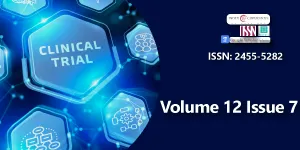Tyrosinemia Type 1: A Case Prior to Newborn Screening and the Importance of Early Treatment
Main Article Content
Abstract
Abstract
Introduction: Tyrosinemia type 1 (TYR1) is a severe hereditary metabolic disorder caused by a deficiency of the enzyme fumarylacetoacetate hydrolase (FAH), leading to the accumulation of toxic metabolites and hepatorenal damage. Without treatment, it may progress to liver failure or hepatocellular carcinoma. Nitisinone is the treatment of choice, as it blocks the formation of toxic compounds. Early diagnosis is critical, particularly in contexts where newborn screening is not yet implemented.
Case report: We present the case of a 2-month-old infant, born to consanguineous parents, who presented with abdominal distension, vomiting, and diarrhea. The patient exhibited severe coagulopathy, metabolic acidosis, and ultrasound findings suggestive of acute abdomen. After transfer to a tertiary care center and completion of metabolic studies, a diagnosis of TYR1 was confirmed. Nitisinone therapy was initiated, with a favorable outcome following a complex stay in the intensive care unit.
Discussion: Although the use of nitisinone has significantly reduced the need for liver transplantation, further studies are needed to better understand its potential long-term neurocognitive effects. Continuous clinical and neuropsychological monitoring is recommended for affected individuals.
Conclusions: Early diagnosis of TYR1 through newborn screening enables prompt initiation of treatment with nitisinone and dietary management, significantly improving survival and reducing the risk of hepatocellular carcinoma. While treatment has dramatically changed the prognosis, uncertainties remain regarding long-term effects, particularly at the neurocognitive level. Comprehensive follow-up, including clinical, metabolic, and neuropsychological assessments, is essential.
Downloads
Article Details
Copyright (c) 2025 Quílez HL, et al.

This work is licensed under a Creative Commons Attribution 4.0 International License.
Grompe M. Disorders of tyrosine metabolism. In: Connor RF, editor. UpToDate. Waltham, MA: Wolters Kluwer; [cited 2025 Mar 23]. Available from: https://www.uptodate.com
Spanish Ministry of Health. National Newborn Screening Program for Congenital Diseases [Internet]. Madrid: Ministry of Health; [cited 2025 Mar 23].
Mohamed S, Kambal MA, Al Jurayyan NA, Al Nemri A, Babiker A, Hasanato R, et al. Tyrosinemia type 1: a rare and forgotten cause of reversible hypertrophic cardiomyopathy in infancy. BMC Res Notes. 2013;6:362. Available from: https://doi.org/10.1186/1756-0500-6-362
Chinsky JM, Singh R, Ficicioglu C, van Karnebeek CDM, Grompe M, Mitchell G, et al. Diagnosis and treatment of tyrosinemia type I: a US and Canadian consensus group review and recommendations. Genet Med. 2017;19(12):1380–95. Available from: https://doi.org/10.1038/gim.2017.101
Imseis EM, Bynon JS, Thornhill C. Case of hepatocellular carcinoma in a patient with hereditary tyrosinemia in the post-newborn screening era. World J Hepatol. 2017;9(9):487–90. Available from: https://doi.org/10.4254/wjh.v9.i9.487
Nitisinone: new drug. Type 1 tyrosinemia: an effective drug. Prescrire Int. 2007;16(88):56–8. Available from: https://pubmed.ncbi.nlm.nih.gov/17458044/
van Ginkel WG, Jahja R, Huijbregts SCJ, Daly A, MacDonald A, De Laet C, et al. Neurocognitive outcome in tyrosinemia type 1 patients compared to healthy controls. Orphanet J Rare Dis. 2016;11:87. Available from: https://doi.org/10.1186/s13023-016-0472-5

